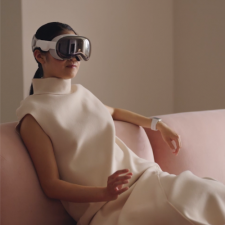Apple has shared its long awaited mixed reality headset with the world as news of the Vision Pro emerged as the highlight of the recent WWDC show. The high-end headset boasts the best resolution ever seen in a VR/AR product and uses eye and hand tracking to redefine how users explore this blend of worlds.
However, it comes at a price - a big one. With a price tag of $3,499, some wonder what Apple hopes to achieve with its latest product. Mass adoption seems unlikely, but this does give developers a look into what they may be creating games and apps for in the future.
In this exclusive guest post, Raptor PR’s head of content, Craig Chapple, discusses the VR market and where Apple’s Vision Pro may fit into the frame.
The iPod and iPhone in particular were industry-defining. Apple’s foray into mobile has since sparked a massive surge in the sector that last year generated $110 billion from player spending in 2022, according to data.ai estimates. (We can talk about ATT another day).
So when it was finally ready to unveil its long-rumoured virtual/augmented reality headset, expectations were high. Meta and Sony have been doing a lot of heavy lifting for VR, but Apple’s entry could, in tandem, send the tech to the mass market.
The current market and opportunity
CNBC reported, citing NPD Group data, that sales of virtual reality headsets in the United States slumped by 2% year-over-year to $1.1 billion. Meanwhile, CCS Insight claimed global shipments of VR and AR hardware fell more than 12% Y/Y to 9.6 million.
The Verge revealed that internal Meta figures put Quest sales at 20 million to date, but that its headsets lack engagement. There is a market there for VR, but from a games industry perspective, it pales in comparison to mobile, desktop and console.
Sony’s PSVR 2 is said to have outsold its predecessor during its first six weeks with just under 600,000 units sold. But Sony is happy to tout those early sales, things seemed to be flatlining by week six.
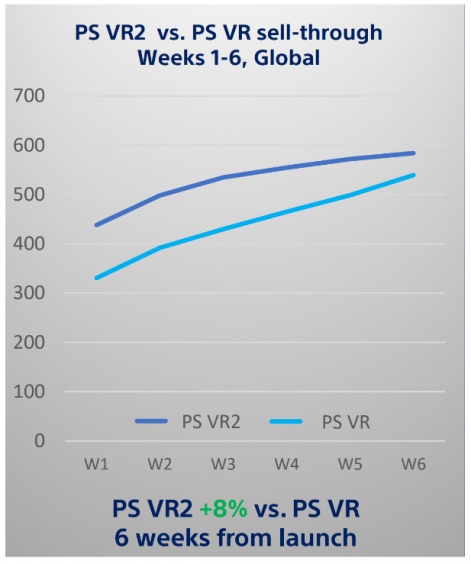
It’s a market in need of a jolt.
In comes Apple…
When Apple revealed the Vision Pro last week, the technology looked incredible. Switching between augmented and virtual reality opens up a whole range of possibilities for developers to play with, opening the device up to a vast array of potential games. Meanwhile rivals like Meta are currently entrenched in ‘just’ 3D virtual reality experiences. Though Meta wants to launch augmented reality glasses by 2025, according to The Verge.
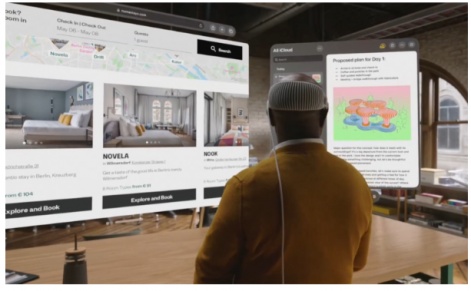
Eye and hand tracking sounds like a particularly innovative input system that should feel native to the headset experience. Given the lack of any games during the reveal though (does Apple Arcade really count?), it remains to be seen how developers can effectively utilise this for the medium. Time will tell, but for the general consumer, this is going to be much more welcoming than a clunky controller.
As a side-note, I’m curious to discover more about what the Financial Times described as Vision Pro’s ‘killer app’, which was not shown during the presentation.
It’s a dev kit, not a consumer device
But then came the price. Starting from $3,499. Ouch! To massive fanfare, in a slick presentation and a consumer-edged reveal that even rolled out Disney’s CEO Bob Iger in, Apple had actually announced a devkit and a device that is geared toward replacing your computer. In fact, in the press release after, there was no mention of augmented and virtual reality.
Instead, it was classic Apple: ignore everything that’s gone before, pretend what it’s doing is completely new and revolutionary, and they’re calling that spatial computing. No mention of the metaverse, either. Better start changing those investor pitch decks. It’s a notable move by Apple to position away from any Metaverse messaging, even if this ‘vapourware vision’ ultimately powers it.
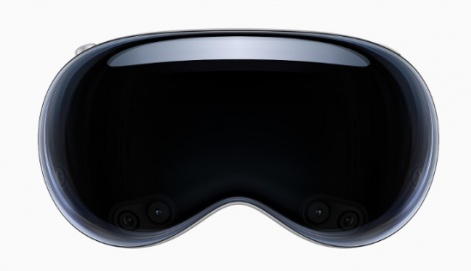
Releasing the hardware right now as a dev kit gives time for developers to get to grips with the hardware, bring existing content for other devices over, and start making all-new experiences that could take years to create.
But the price and the pitch was all wrong. And it puts question marks on the technology moving forward. If a company charges $3,499 off the bat for new hardware, of course it could look incredible. That’s the cost of a very high spec PC! But what happens when they chip off $2,500/$3,000 to bring it to the mass market? What does it look like then? What exactly are developers building for right now?
There’s a reason Meta has announced the price of the Quest 3 will start at $499. And while the tech behind the Vision Pro is impressive, it clearly has to make sacrifices to achieve this price point.
And if the market is relatively small to other platforms at Meta’s price points, Apple has little hope for mass market adoption at this effectively enterprise level.
Real issues
The Vision Pro is the first in what Apple hopes is a long range of hardware lines. But it definitely needs to work on a few things. That battery life of two hours (probably less for intensive experiences, like games) is criminal and unsuitable for most tasks.
I also find it odd that users who wear glasses will need to fork out for special prescription lenses from Zeiss. In Apple’s own presentation, it discussed myopia rates that are forecast to reach 50% of the global population by 2050. And yet, its own technology is penalising those very people it highlighted, and for the price, it’s pretty unforgivable and further reduces accessibility. Nobody is going to buy separate lenses to use their Vision Pro. Nobody.
And you have to say, using these headsets at home is still going to be quite the solitary experience. Apple’s attempt at displaying your eyes through the headset while chatting with friends and family is just hilariously awful.
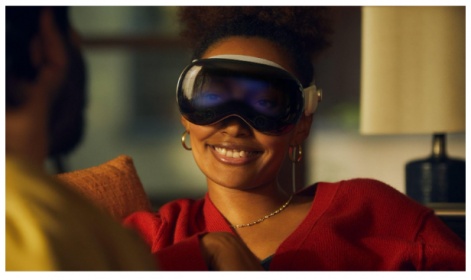
I can see why Tim Cook didn’t wear this on stage. Any other huge product launch would have seen an Apple executive showing it off. Not this.
Searching for a market
Right now it feels as though companies like Apple and Meta are willing headsets into existence, that they are investing billions of dollars just to make sure they aren’t left behind by the next big platform, as companies like Microsoft were with mobile. It’s still difficult to see why consumers should use these over a TV, computer, console or smartphone.
Apple’s foray into VR and AR is good news for developers working in those spaces. It will increase the reach and maybe even make it a notable platform. But we remain many years out from mass market adoption.
Edited by Paige Cook

